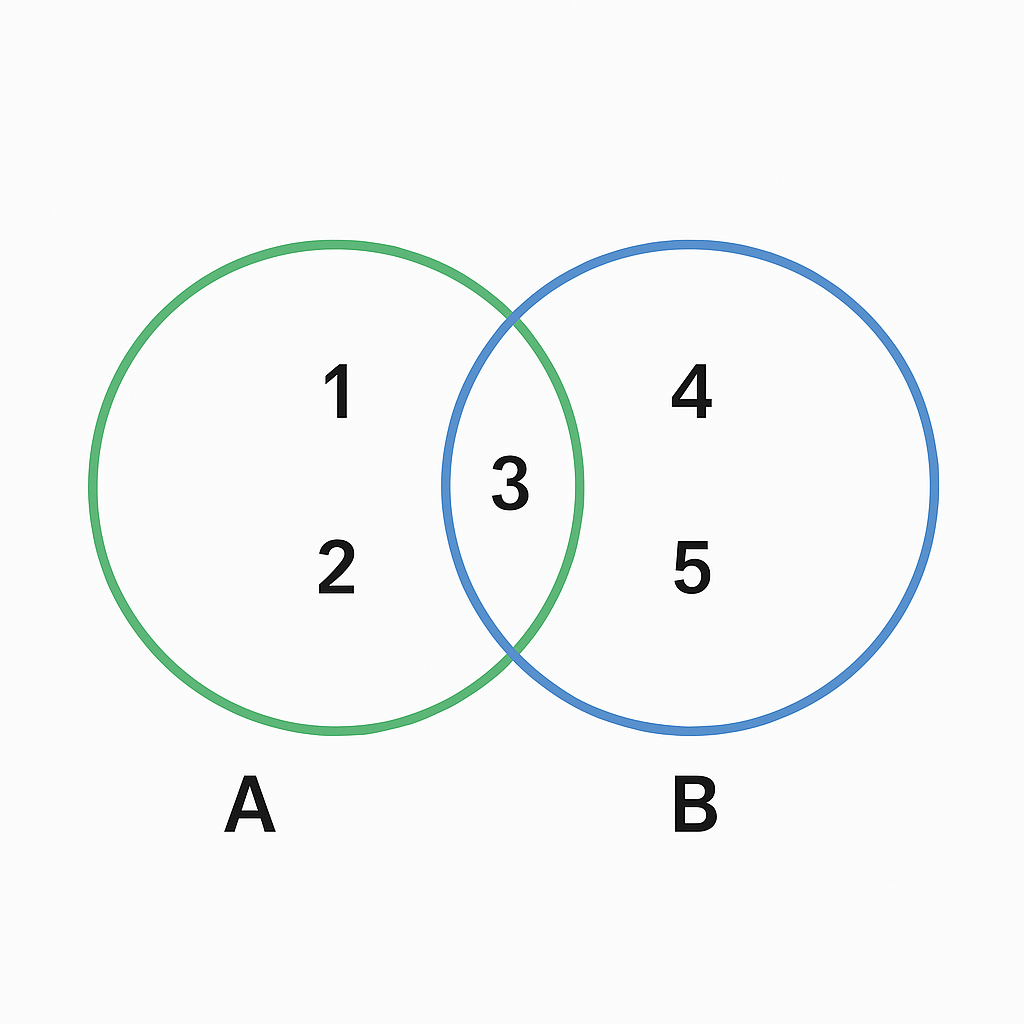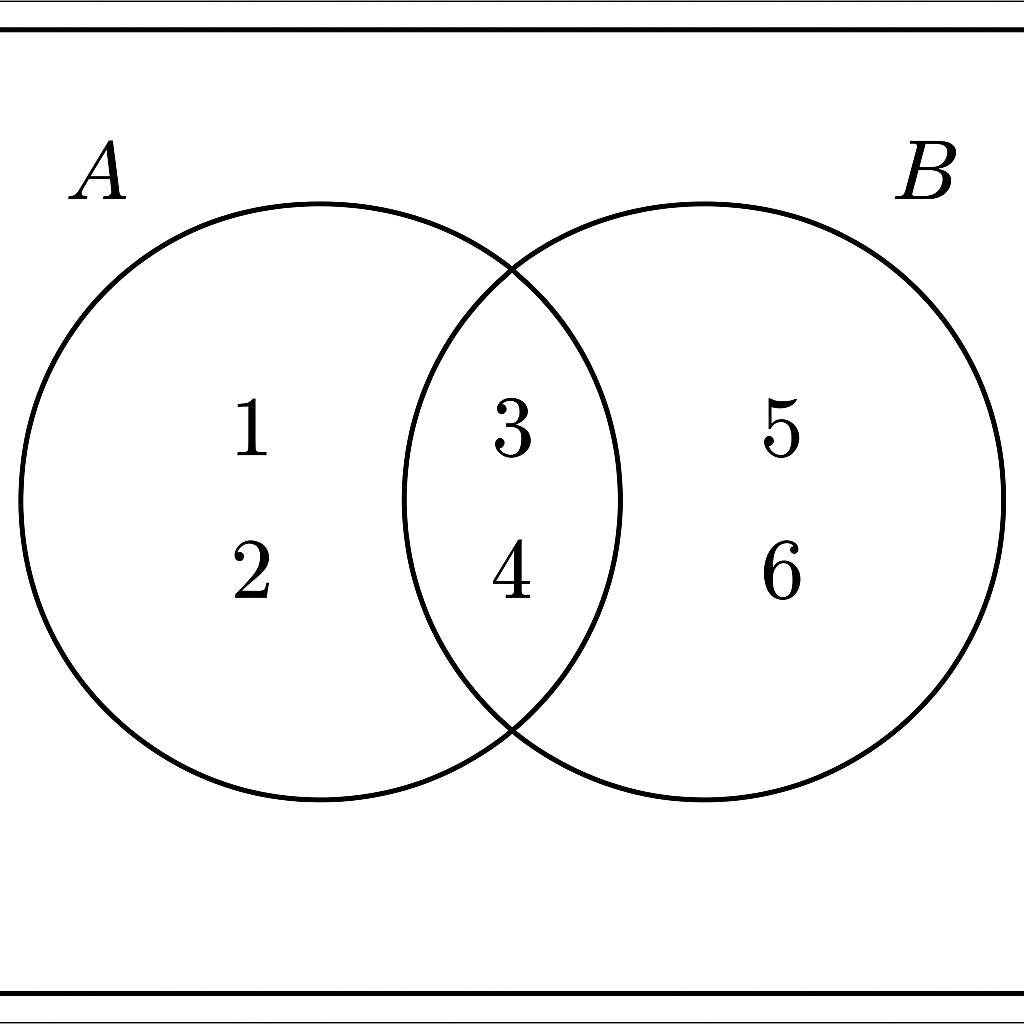Shopping cart
Hello There!
Welcome to GattPrep, your Guide for Life and Learning
Have you ever made a guest list for a party or grouped your clothes by type (shirts, trousers, shoes)? 🎉👕👟 That’s exactly what we do in Set Theory — we collect and work with groups of related items. In mathematics, a set is a collection of distinct elements that share something in common.
This lesson introduces you to:
A set is a collection of well-defined, distinct objects or elements.
We usually write sets using curly braces { }.
Example: The set of vowels = {a, e, i, o, u}
Notation:

Venn diagrams are used to show the relationship between two or more sets visually. Each set is drawn as a circle. Overlapping areas show shared elements (intersection).
Example:
Let A = {1, 2, 3}, B = {3, 4, 5}
Then the Venn diagram shows 3 in the overlap.

🟢 Set A and 🔵 Set B overlap at element 3.
All elements in A or B or both.
Example:
A = {1, 2, 3}, B = {3, 4, 5}
A ∪ B = {1, 2, 3, 4, 5}
Only the elements common to both A and B.
Example:
A ∩ B = {3}
All elements in the universal set U that are not in A.
Elements in A but not in B.
Example:
A = {1, 2, 3}, B = {3, 4, 5}
A – B = {1, 2}


🅰️ A. Basic Set Notation
🅱️ B. Word Problems
Think about your own interests — music, sports, books, etc. Could you group them into overlapping sets? Try creating your own Venn diagram with at least 2 categories!